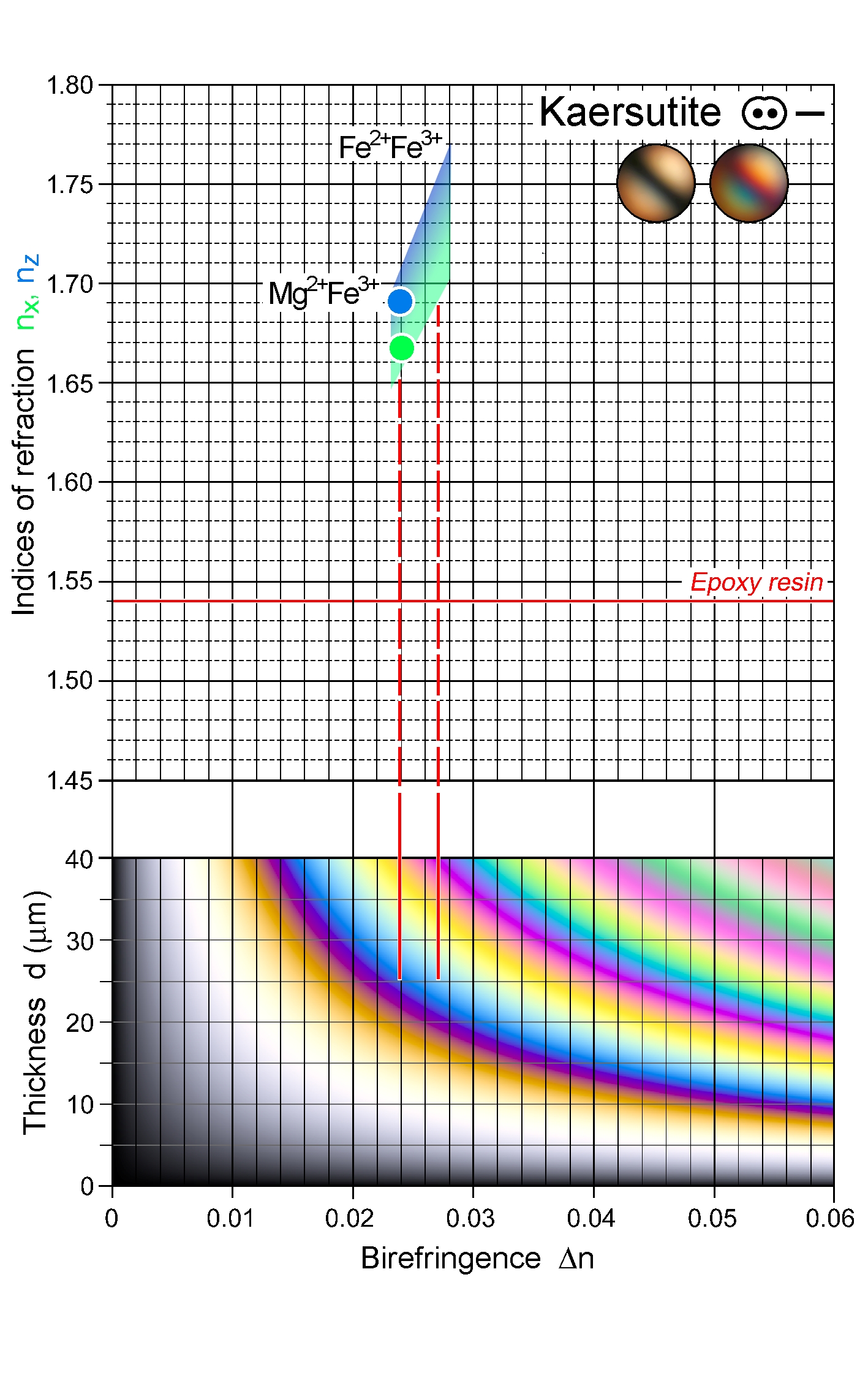|
| Formula | NaCa2(Mg,Fe2+,Fe3+)4Ti(Al2Si6)O22(OH)2 |
| | Optic class & sign | Biaxial negative |
| | Optical orientation | X near a, Y = b, Z near c |
| | Optical plane | (010) |
| | Relief | High |
| | Refractive indices | nx = 1.667 -1.696
|
|
ny = 1.680 -1.725
|
|
nz = 1.691 -1.743
|
|
| n increases with increasing Ti and increasing Fe3+/Fe2+ ratio |
| | Birefringence (max.) | 0.024 - 0.047 |
| | | Δn increases with increasing Ti and increasing Fe3+/Fe2+ ratio ; interference colours may be masked by mineral colour. |
| | Optic Angle
| 2Vx
= 66 - 85° |
| | 2Vz
|
| | Sign of elongation | Length-slow, l (-) |
| | Interference figure | Large 2V, second- to third-order isochromes |
| | Colour / pleochroism | Reddish brown to greenish brown
Pleochroism: X pale yellow to brownish yellow, Y reddish brown, Z dark reddish brown or greenish brown; absorption Z ≥ Y > X
|
| | Zoning | |
|
|
| Form | Habit | Columnar; 4-sided diamond-shaped or 6-sided cross-sections Ʇ c |
| | | Surface | Euhedral to anhedral |
| | Cleavage | 2 sets {110} perfect, at 124 and 56° (seen in sections Ʇ c). In prismatic sections, the traces of the two principal cleavage sets are parallel. Parting on {100} and {001} may occur. |
| | Twinning | Simple or multiple on {100} |
| | Extinction | Inclined in prismatic sections, cɅZ = 0 - 19°
Symmetrical to {110} cleavage and prism faces, straight to {010} faces in sections Ʇ c.
|
|
|
| Reaction textures | |
| | Alteration / decomposition | Amphiboles, chlorite, Fe-Ti oxides |
|
|
| Occurence | Ign | Trachybasalt, trachyandesite, trachyte, monzonite, syenite, alkaline lamprophyre |
| | | Met | |
| | | Sed | |
| | | Hyd | |
| | | Other | |
|
|
| Distinctive properties | Habit, including characteristic cross-sections ⊥ c, either diamond-shaped or six-sided combination of {110} and {010} faces; characteristic amphibole cleavage, brown colour and pleochroism, Δn, n, extinction angle cɅZ.
Optical properties are close to those of oxyhornblende.
|
| | Additional comments | |
|
|

 Images
Images 


 Images
Images 
